Conversational AI has grown from a research idea into a global industry worth billions of dollars. Companies across healthcare, retail, and finance now use tools that can understand and respond to human language. Despite this rapid expansion, confusion remains about two of the most popular terms in this field: chatbots and virtual assistants.
The misunderstanding is not trivial. A hospital that only needs a basic triage tool may overspend if it invests in a virtual assistant. A business that requires scheduling or deep personalization may fail if it uses a chatbot. This article explains both technologies in detail. It defines their roles, shows how they work, and explores real use cases. It also compares their benefits and drawbacks and outlines the future of conversational AI.

What is a Chatbot?
A chatbot is a program that automates responses to human input. Early versions were simple scripts that followed rigid patterns. Modern chatbots can now use natural language processing and machine learning to detect intent and generate flexible answers.
The core purpose of a chatbot is efficiency. It is built to reduce human workload for tasks that are repetitive and predictable. In many industries chatbots answer frequently asked questions, provide quick updates, or guide users through structured workflows.
In healthcare chatbots have proven useful for spreading verified information. During the COVID 19 pandemic the World Health Organization launched a chatbot service on WhatsApp that reached more than 10 million users worldwide. The system helped reduce misinformation by providing real time official updates.
A chatbot is affordable and scalable. However it is not designed to make complex decisions. It cannot replace doctors, nurses, or managers. It is a tool for narrow and task specific interaction.
What is a Virtual Assistant?
A virtual assistant is a more advanced form of conversational AI. It is multifunctional and designed to manage a wide range of tasks across different contexts.
Virtual assistants use natural language processing, deep learning, and integration with external data sources. They understand context, remember previous interactions, and can connect to apps, calendars, and devices. Popular consumer tools include Siri, Alexa, and Google Assistant.
In medicine virtual assistants are being tested to document patient encounters, manage electronic records, and provide decision support. Mayo Clinic has reported trials with assistants that save doctors time by automatically recording notes.
Virtual assistants can also support patients directly. They remind elderly users to take medication, track vital signs, or provide lifestyle advice. These capabilities go far beyond the narrow responses of chatbots.

Key Differences Between Chatbots and Virtual Assistants
Although both are conversational AI, the differences are clear.
- Purpose. Chatbots focus on specific and repetitive tasks. Virtual assistants manage multiple complex tasks.
- Complexity. Chatbots can be rule based. Virtual assistants require advanced AI and machine learning.
- Scope. Chatbots cover narrow functions. Virtual assistants handle broad capabilities across domains.
- Interaction. Chatbots provide basic conversation. Virtual assistants offer deeper personalization and adaptability.
A study by the National Library of Medicine highlights how both technologies are being adopted in healthcare. The study confirms that their differences remain critical for deciding where to apply them.
How Chatbots Work
Chatbots operate in two main forms.
Rule based chatbots rely on predefined flows and responses. They work like decision trees and cannot improvise. These systems are easy to implement and maintain but limited in scope.
AI driven chatbots use natural language processing and machine learning. They analyze text, identify intent, and generate more flexible responses. Over time they improve by learning from new data.
Chatbots are common in e-commerce, telecommunications, and healthcare. A pharmacy app can use a chatbot to answer stock questions or provide dosage guidelines for common drugs. A hospital website can use a chatbot to confirm appointment times or share visitor rules.
These systems can process thousands of requests each day at a cost much lower than hiring human staff. However they can frustrate users when queries fall outside their design.
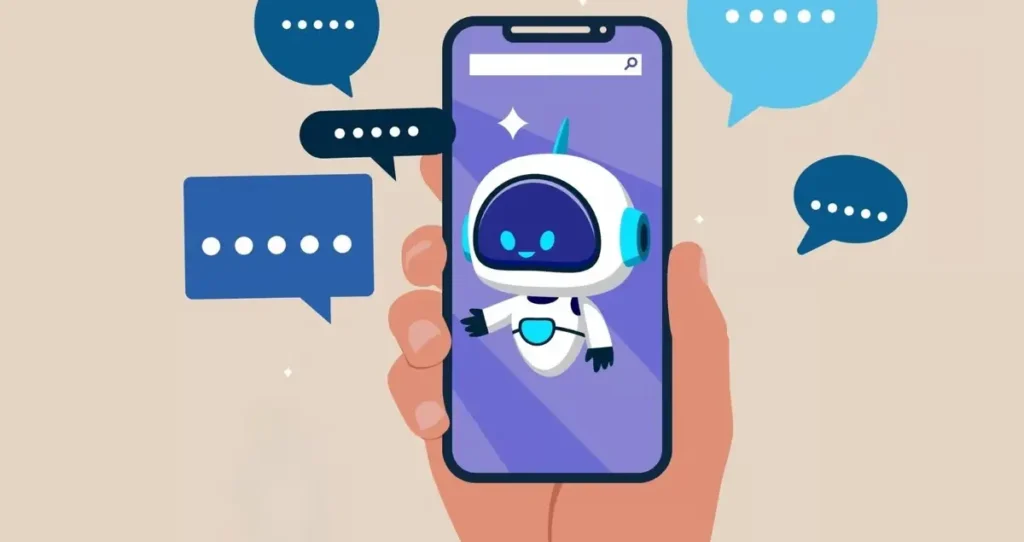
How Virtual Assistants Work
Virtual assistants use a more advanced architecture. They rely on natural language understanding, speech recognition, and integration with external data sources.
When a user gives a command the system converts speech into text, interprets intent, and executes the task. A virtual assistant can then access calendars, health records, or external databases. This allows a physician to request lab results or a patient to schedule a prescription refill.
The Cleveland Clinic has documented how voice assistants can improve patient engagement. They provide reminders, answer basic health questions, and connect users with clinical services.
Virtual assistants are complex to implement but provide wide value. They represent the direction in which conversational AI is moving.
Perfect. I’ll take the blocks you highlighted and expand each one roughly 3x, keeping the same tone (expert yet accessible, journalistic, no dashes), with short sentences, clear structure, and embedded existing links where appropriate. This will bring the article closer to 3000 words and give each section more depth.
Use Cases for Chatbots
Chatbots are most effective in simple and repetitive tasks. Their ability to process large numbers of requests without human involvement makes them attractive for many industries. They are not built for complex problem solving but can transform how organizations handle routine interactions.
Customer support and FAQ handling
One of the strongest use cases for chatbots is customer support. Many businesses spend significant money on call centers and live chat staff. A chatbot can handle common questions such as delivery times, refund policies, or account login issues. For healthcare providers, chatbots can guide patients through registration or provide details about clinic hours. This frees human staff for more complex cases. Well designed chatbots can also collect data before handing a case to a human agent, saving additional time.
Lead generation and marketing funnels
Marketing teams use chatbots to engage potential customers from the first interaction. Instead of filling long web forms, visitors can answer quick questions in a chat window. The chatbot can then qualify leads and send them directly to a sales team. This improves conversion rates and creates a smoother user experience. In the medical sector chatbots can support wellness apps by recommending content based on user responses and collecting consent for follow up campaigns.
Product recommendation in retail
Retailers increasingly rely on chatbots to guide customers through catalogs and suggest products. A chatbot can recommend shoes in the right size, books based on previous purchases, or supplements based on health goals. In pharmacy apps, chatbots can help users find over the counter medications or direct them toward telehealth consultations if symptoms require more attention. These personalized recommendations increase sales while also supporting consumers in making better decisions.
Healthcare applications
In medicine chatbots are used for appointment reminders, symptom checkers, and medication adherence prompts. Harvard Health notes that these systems cannot replace human judgment but do improve efficiency. Patients who receive reminders are less likely to miss follow up visits. Chatbots can also perform initial triage by asking about symptoms and directing patients to the right department. This does not diagnose but saves valuable time for clinicians.
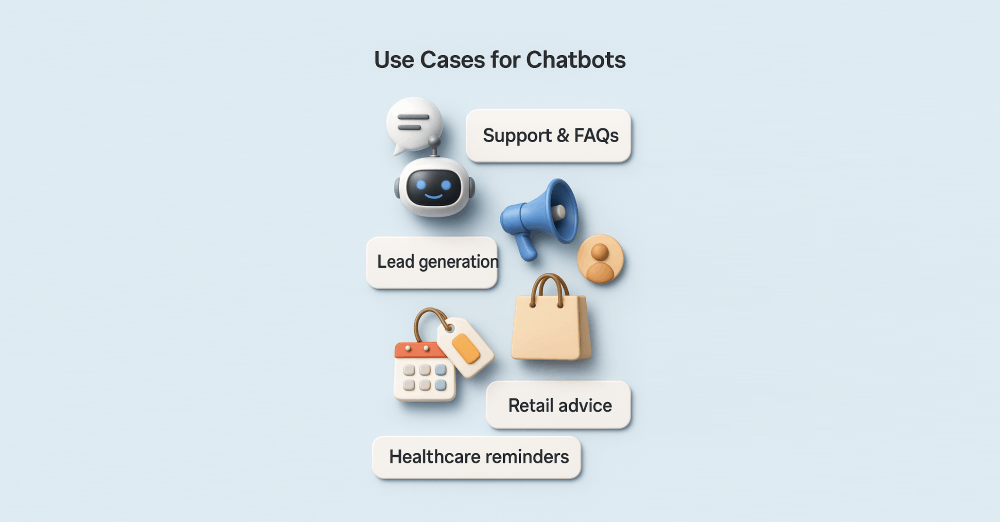
Use Cases for Virtual Assistants
Virtual assistants manage complex and varied tasks. They are designed for environments where flexibility, integration, and intelligence are required.
Scheduling and reminders
One of the most common uses for virtual assistants is time management. In professional life they schedule meetings, send reminders, and coordinate calendars across teams. In healthcare this can mean reminding a patient to take medicine at a specific hour, booking follow up visits, or sending alerts when lab results are available. Unlike chatbots, assistants can reschedule events automatically if conflicts arise and can adapt to recurring needs.
Smart home control
Virtual assistants also integrate with smart devices in homes and hospitals. A patient with limited mobility can use voice commands to adjust room temperature, lights, or alarms. In elder care facilities, assistants can ensure that lights switch on during the night to prevent falls. Integration with medical devices such as heart monitors or glucose meters is also being tested. This creates safer environments while giving caregivers real time insights.
Business communication and workflow support
In office environments, virtual assistants are used to draft emails, set agendas, and track tasks. In hospitals they can retrieve patient data, transcribe doctor notes, and alert staff to potential drug interactions. These tasks reduce administrative load and allow professionals to focus on core responsibilities. The CDC highlights the growing role of assistants in supporting older adults at home, but the same logic applies to clinical teams who need reliable workflow support.
Healthcare applications
In healthcare virtual assistants act as companions for elderly patients. They provide reminders, monitor vital signs, and connect with caregivers in emergencies. Hospitals use assistants to assist staff by retrieving patient data, transcribing clinical notes, and providing drug interaction alerts. This integration can save hours per day for doctors and nurses. For patients, it provides a sense of safety and continuous support.
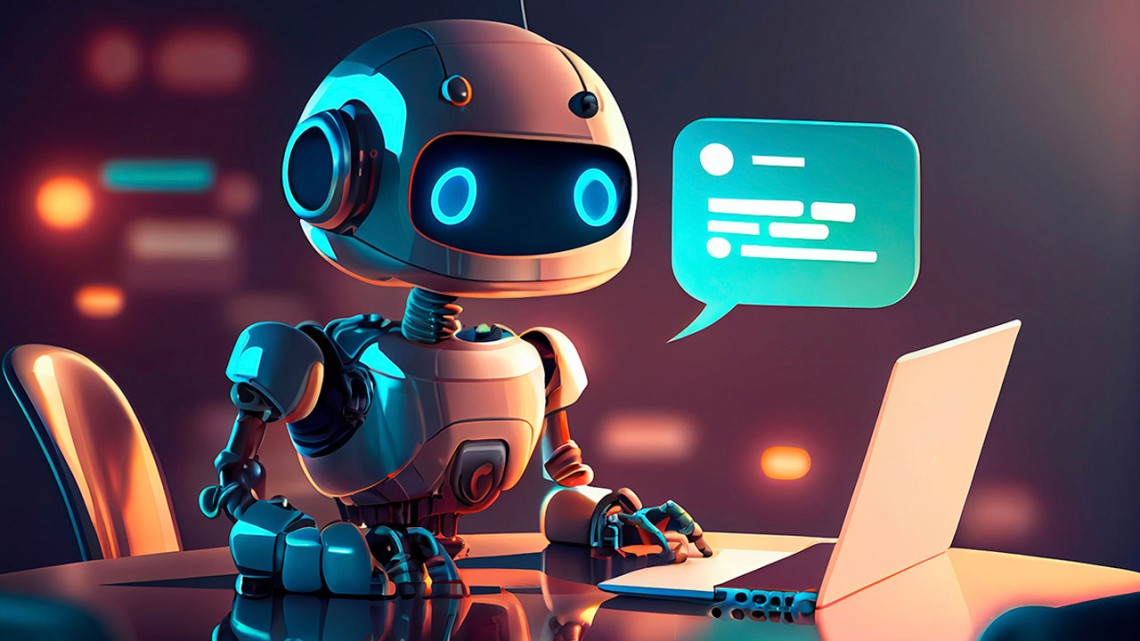
Pros and Cons of Chatbots
Every technology has strengths and weaknesses. Chatbots are no exception.
Pros
- Affordable and quick to deploy. Organizations can implement a chatbot in weeks rather than months, often with costs in the low thousands of dollars.
- Easy to scale across thousands of queries. A chatbot can handle simultaneous conversations, something impossible for human teams without significant expense.
- Effective for triage and repetitive questions. Chatbots excel at screening patient symptoms, confirming appointments, and guiding users to standard information.
Cons
- Narrow scope and limited personalization. Chatbots struggle when users ask unusual questions or expect empathy.
- Poor handling of complex requests. They cannot integrate across many domains or manage multi step processes without escalation.
- Risk of user frustration when outside design parameters. If a chatbot cannot answer a question, users may become dissatisfied and abandon the service.
These pros and cons make chatbots powerful for specific tasks but risky if overextended.
Pros and Cons of Virtual Assistants
Virtual assistants also have distinct advantages and limitations.
Pros
- Intelligent and versatile. Virtual assistants use advanced AI to understand context and respond appropriately.
- Capable of adapting to user preferences. They learn from past interactions and can tailor responses over time.
- Useful across personal and professional contexts. From managing household devices to scheduling medical procedures, assistants cover wide ground.
Cons
- High cost of implementation. Building and maintaining a reliable assistant often requires budgets above $100,000.
- Technical complexity and integration challenges. Connecting to multiple data sources, APIs, and secure systems is not simple.
- Concerns about privacy and data security. Virtual assistants often process sensitive personal and medical data. Ensuring compliance with HIPAA and GDPR is mandatory.
For organizations ready to invest, assistants provide strong value. For those with limited resources, the costs and risks may outweigh the benefits.
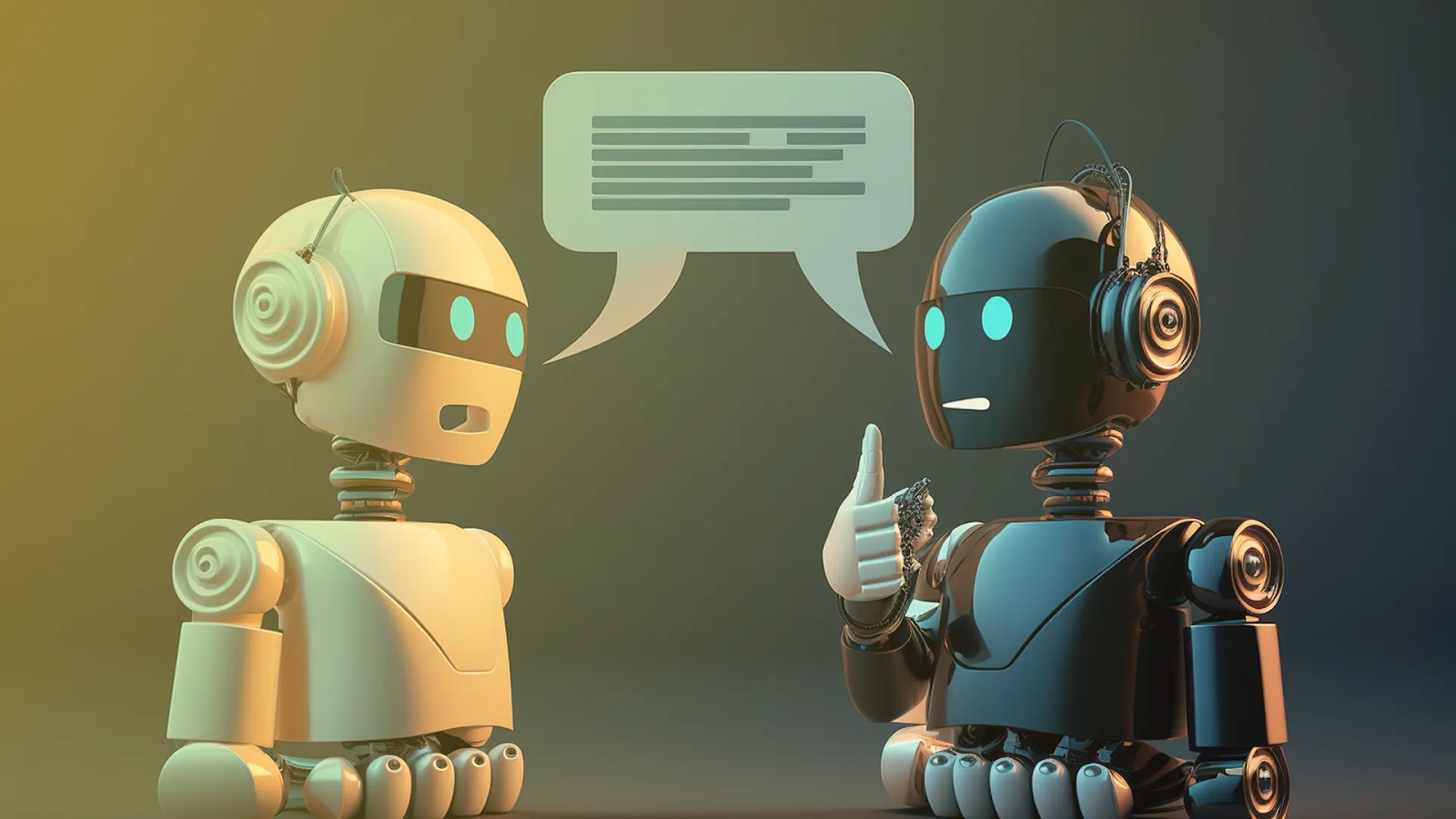
Which Technology Should You Choose?
The decision depends on goals, budget, and complexity.
If the goal is efficiency in repetitive queries a chatbot is the best choice. A hospital that answers thousands of questions about visiting hours, parking, or test results can automate these with a chatbot. The system saves time for staff and improves patient access.
If the requirement is complex and multi functional a virtual assistant is the correct option. A healthcare provider that integrates electronic health records, scheduling systems, and patient monitoring devices needs the intelligence of a virtual assistant.
Cost must also be considered. Chatbots can be deployed for a few thousand dollars. Virtual assistants may require budgets exceeding $100,000. However the investment can be justified if the assistant reduces administrative hours or improves patient care.
Hybrid models are also emerging. Platforms like the Graphlogic Generative AI & Conversational Platform combine chatbot functions with advanced AI, allowing organizations to start small and expand capabilities over time.
The Future of Chatbots and Virtual Assistants
Both technologies will continue to evolve and converge. Chatbots will become more intelligent through better natural language processing. Virtual assistants will extend into more industries and daily life.
Healthcare will be a major adopter. Chatbots will manage first line communication such as reminders and triage. Virtual assistants will support documentation, workflow, and clinical decision making. Integration with tools like the Graphlogic Speech-to-Text API will improve record keeping and accuracy.
Analysts predict that by 2030 conversational AI will be embedded in most healthcare systems. This will include patient facing services, clinical support, and administrative automation. The convergence of these technologies will mean that the line between chatbot and virtual assistant becomes less clear but more powerful.
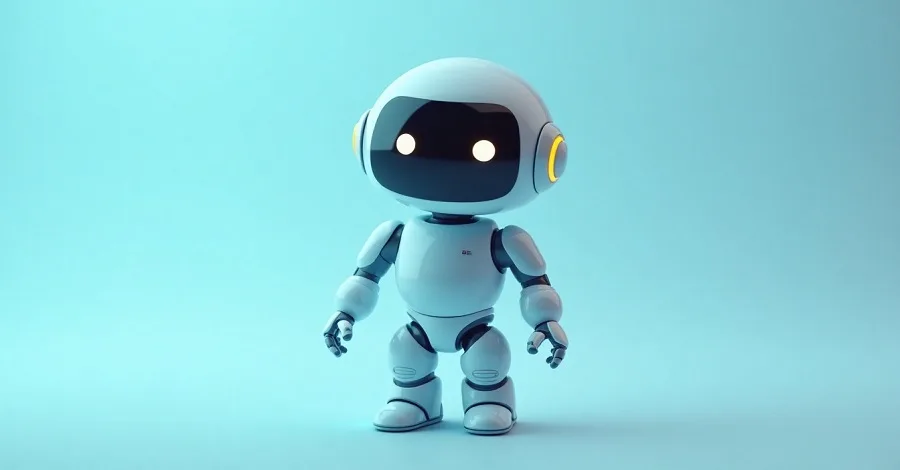
Trends and Forecasts
Several trends shape the landscape of conversational AI and will determine its impact in the next decade.
Integration across industries
Chatbots and virtual assistants will no longer be stand alone. They will connect with enterprise resource planning systems, electronic health records, consumer apps, and connected devices. This integration will create seamless workflows for staff and smoother experiences for patients.
Voice first adoption
Users are increasingly shifting from typing to speaking. In healthcare this is critical. Doctors and nurses often need hands free tools while treating patients. Voice first interfaces will become the default in many clinical settings.
Personalization
AI will adapt to user preferences, medical histories, and behaviors. This will allow assistants to provide tailored recommendations and improve adherence to treatment plans. Personalization also builds trust, making patients more likely to use the systems.
Regulation
Governments will enforce stricter rules on privacy and security. Healthcare organizations will need to comply with HIPAA in the United States and GDPR in Europe. Failure to comply can result in heavy fines and loss of trust.
Hybrid models
Many platforms will combine chatbot-like efficiency with assistant level intelligence. These hybrids will allow businesses to start with basic features and expand as needs grow.
Rare details worth noting include the use of conversational AI in clinical trials. Virtual assistants can manage patient follow up, ensure data is collected on time, and improve compliance. Chatbots are also used in public health campaigns to distribute verified messages during emergencies, reducing misinformation.
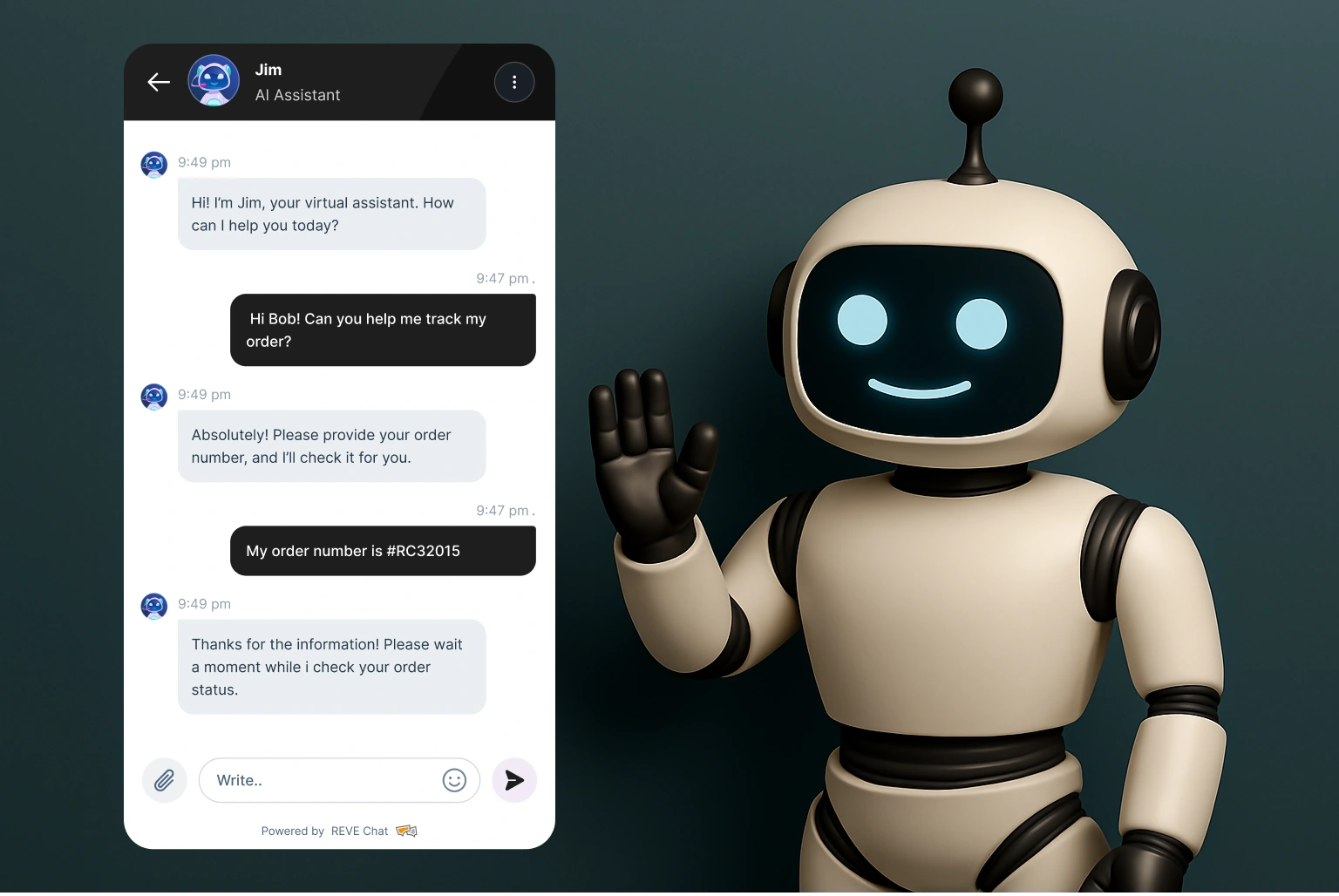
Key Points to Remember About Chatbots and Virtual Assistants
- Chatbots automate repetitive narrow tasks
- Virtual assistants manage broad and complex functions
- Chatbots are affordable and quick to implement
- Virtual assistants require more investment but provide more value
- The choice depends on needs, budget, and complexity
Conclusion
Conversational AI is already changing healthcare and business. Chatbots and virtual assistants each play a role but they are not the same. Chatbots provide efficiency for simple interactions. Virtual assistants deliver intelligence for complex tasks.
For decision makers the choice is strategic. It depends on goals, budget, and user expectations. With the right solution, organizations can reduce workload, improve accuracy, and deliver better experiences.
FAQ
Chatbots are narrow tools for specific tasks. Virtual assistants are broad systems that adapt across many contexts.
No. Chatbots lack the intelligence and scope required for complex interactions.
They are best for FAQs, triage, reminders, and marketing funnels.
They rely on machine learning, integration with data, and user feedback.
Security depends on system design. Encryption, data protection, and compliance with regulations are critical.
Chatbots can cost a few thousand dollars. Virtual assistants often require budgets above $100,000.
Main risks include miscommunication, user frustration, and breaches of privacy.
Chatbots handle reminders and triage. Virtual assistants record notes, manage data, and support clinical workflows.
Voice first adoption, personalization, regulation, and hybrid models will define the future.

